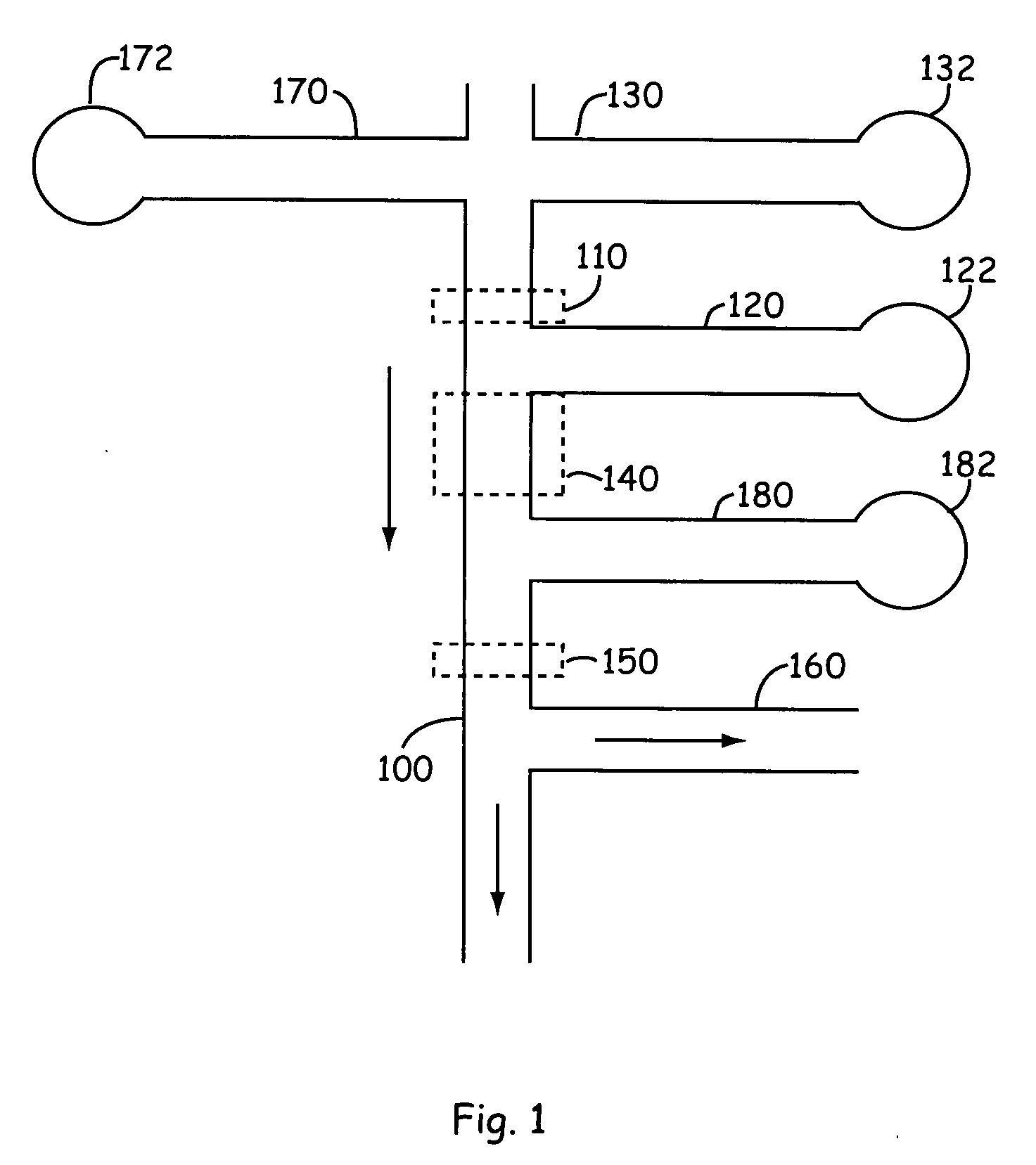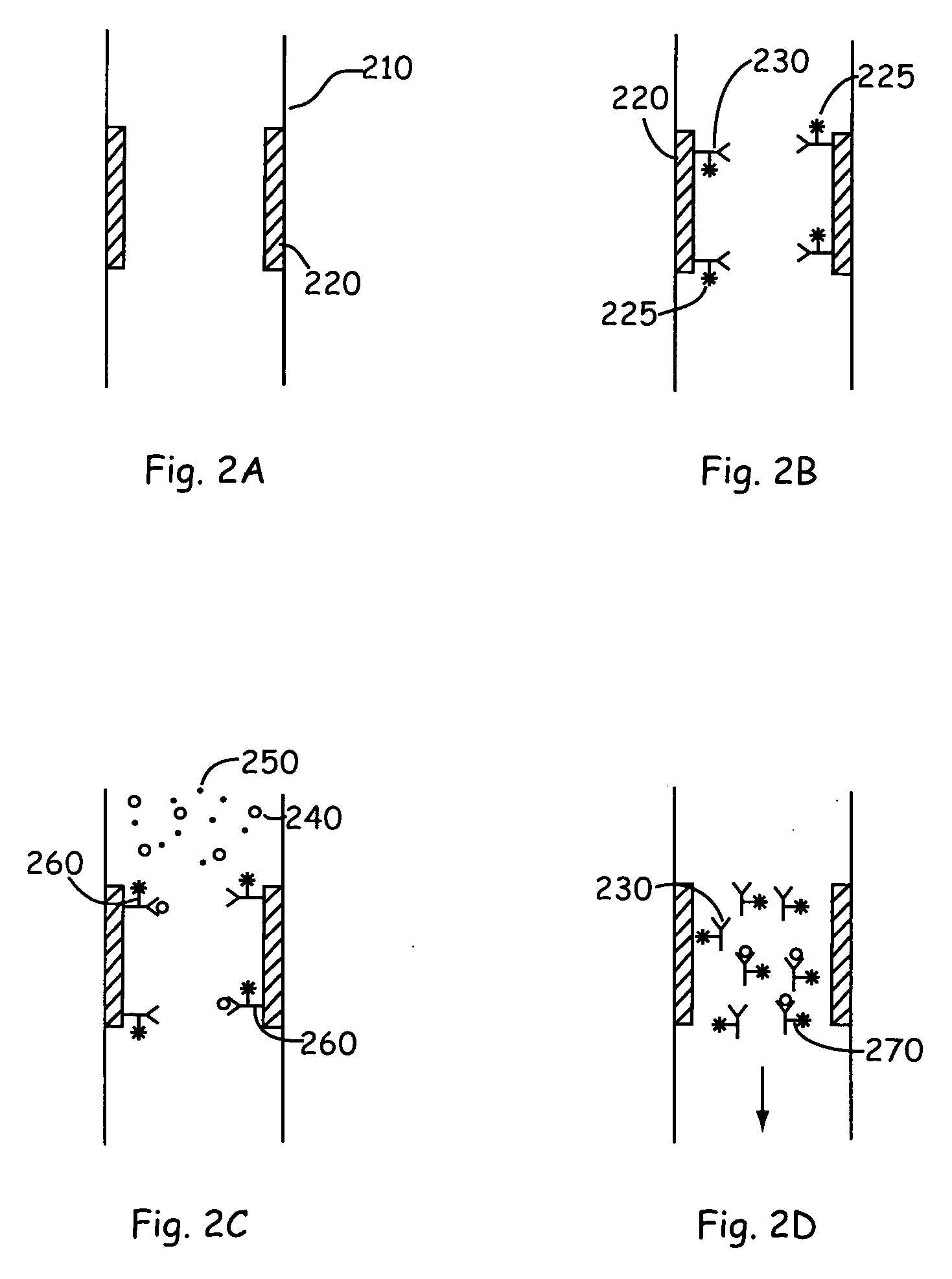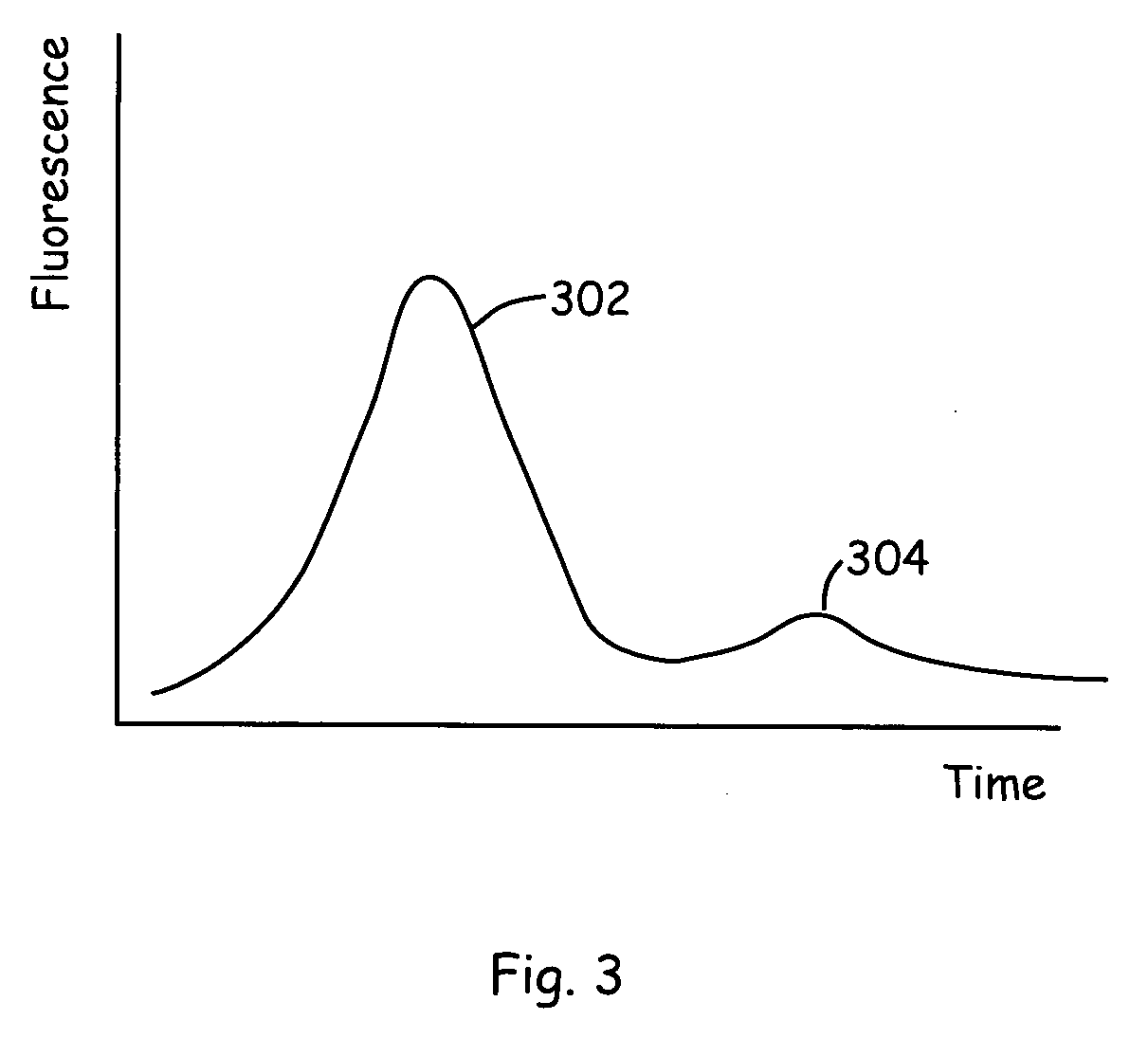Capture and release assay system and method
a technology of capture and release and assay, which is applied in the field of capture and release assay system and method, can solve the problem of limiting the detection sensitivity of the analyte of interest, and achieve the effect of enhancing the detection sensitivity
- Summary
- Abstract
- Description
- Claims
- Application Information
AI Technical Summary
Benefits of technology
Problems solved by technology
Method used
Image
Examples
Embodiment Construction
[0024] The present invention provides new technology for detecting a component of interest in a complex sample. The present invention provides methods and microscale devices for continuous flow binding (e.g., capture), release, separation and detection. Prior to separation, the sample is flowed through a binding channel or affinity purification zone in which it is contacted by a moiety that specifically binds the one or more component of interest within the mixture. For example the component of interest is optionally a protein that is detected by a binding reaction with an antibody specific to the protein. The component of interest is detected in the present invention by binding the component of interest to a binding moiety that is specific to the component of interest. The component of interest is optionally a protein, a peptide, a nucleic acid (e.g., an oligonucleotide, DNA, cDNA, or RNA), carbohydrate, or the like. The component is typically included in a complex mixture of vario...
PUM
| Property | Measurement | Unit |
|---|---|---|
| diameter | aaaaa | aaaaa |
| wavelength range | aaaaa | aaaaa |
| pH | aaaaa | aaaaa |
Abstract
Description
Claims
Application Information
 Login to View More
Login to View More - R&D
- Intellectual Property
- Life Sciences
- Materials
- Tech Scout
- Unparalleled Data Quality
- Higher Quality Content
- 60% Fewer Hallucinations
Browse by: Latest US Patents, China's latest patents, Technical Efficacy Thesaurus, Application Domain, Technology Topic, Popular Technical Reports.
© 2025 PatSnap. All rights reserved.Legal|Privacy policy|Modern Slavery Act Transparency Statement|Sitemap|About US| Contact US: help@patsnap.com



